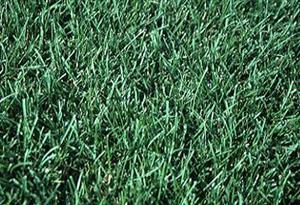| Complexity level: | 4 |
| Project cost ($): | 20 |
| Time required: | It will take a day to set up the experiment, and 14 days to conduct it. |
| Material availability: | The seeds and pots can be purchased from a nursery |
| Safety concerns: | None |
Hypothesis
The Kentucky bluegrass will grow best in slightly acidic soil.
Overview
Soil
The pH level of soil can be measured using a pH test kit. Otherwise, one can send a sample of soil to a laboratory to be tested. The test will reveal whether the soil is acidic, neutral or alkaline. Neutral soil has a pH level of 7. Acidic soil has a pH level that is lower than 7. Alkaline soil has a pH level that is higher than 7. Knowing the pH level of soil is important because the pH level determines how well grass will grow.
Grass thrives in slightly acidic soil. If the pH level of the soil is lower than 6.5, it means that the soil is too acidic. Grass cannot grow in it. Grounded lime stone should be added to such soils to raise their pH levels above 6.5. Soil that contains clay and organic materials require a high amount of lime to raise their pH levels. In comparison, sandy soil required a lower amount of lime. After spreading grounded lime stone in the lawn, the lawn should be washed with water in order to remove lime particles from the grass.
Alkaline soil has a pH level that is higher than 7.5. Soil sulfur should be added to alkaline soil in order to lower its pH value. A soil chart can help us to determine how much limestone or soil sulfur we should add to our garden lawns. It takes a month for sulfur to lower the pH level of alkaline soil. Therefore, it is advisable to apply sulfur to alkaline soil in smaller quantities every few weeks, and to regularly monitor the pH level of the soil.
Scientific Terms
Materials
The materials required for the experiment are as follows:
- 1 packet of Kentucky bluegrass seeds
- 5 plastic pots
- enough soil for the 5 pots
- 1 bag of soil sulfur
- 1 bag of grounded limestone
- 1 pH measuring kit
- 1 soil chart
- a 1m ruler
- a black marker pen
Procedure
1. For this experiment, the independent variable is the pH level of the soil (6.0, 6.5, 7.0, 7.5 or 8.0). The dependent variable is the height of the Kentucky bluegrass. Measure the average height of the grass in each of the 5 pots. The constants (control variables) are the conditions in which the pots are kept (they should be in a place that has the same temperature, humidity and light), the type of grass used, the size of the pots, and the type of soil used.
2. Pour an equal amount of soil into 5 pots. Using a soil chart, add enough soil sulfur or grounded limestone to the samples of soil so that the pH levels of the soil stand at 6.0, 6.5, 7.0, 7.5 and 8.0. Indicate the pH levels on the pots using a marker pen.
3. In each pot, press your finger into the soil to create a hole that is an inch deep. Place a Kentucky bluegrass seed in each hole and bury the seeds with the soil. You may put a maximum of 10 seeds in each pot. Some, but not all of the seeds will germinate - and this is to be expected.
4. Water the seeds everyday for the next 14 days. The same amount of water should be used for each pot. Measure the average height of the grass after 14 days and record this in the table below.


Results
The Kentucky bluegrass was the tallest and healthiest when it was planted in soils of pH levels 6.5 and 7.0.

Conclusion
The hypothesis holds true: the Kentucky bluegrass grows best in slightly acidic soil.
Kentucky bluegrass is a common type of cool season grass. It is normally found in North America. It has bluish--green boat shaped leaves. It grows well in cool climates with sufficient moisture. The Kentucky bluegrass grass can grow to between 1.5 and 2.5 feet.
Also consider
Use other types of grass such Bermuda grass and carpet grass.
Add clay or sand to the soil. Compare the results with your results from this science project.
References
Adjusting soil pH for optimal grass growth - http://ezinearticles.com/?Adjusting-Soil-pH-for-Optimal-Grass-Growth&id=348475
Adjust your soil’s pH - http://www.hometips.com/diy-how-to/lawn-ph-adjusting.html

